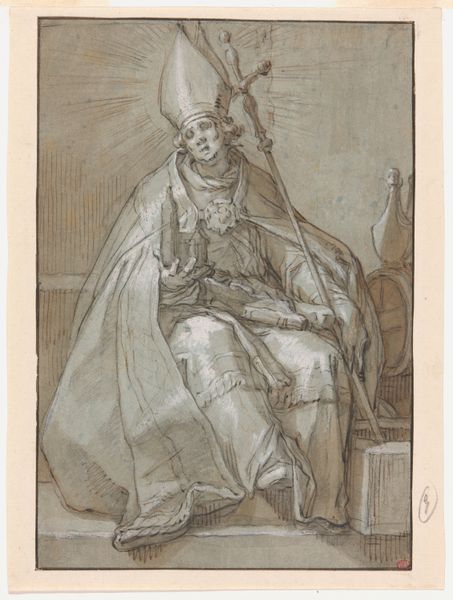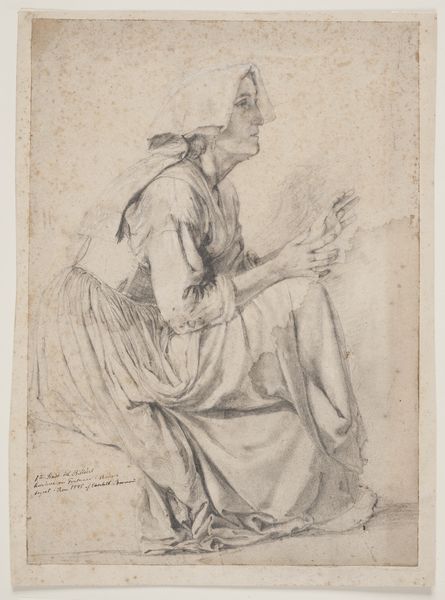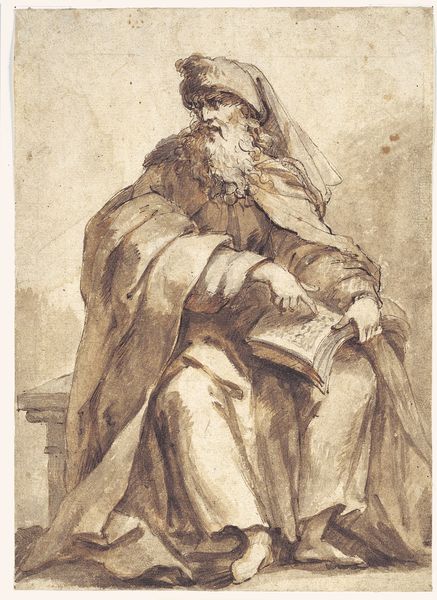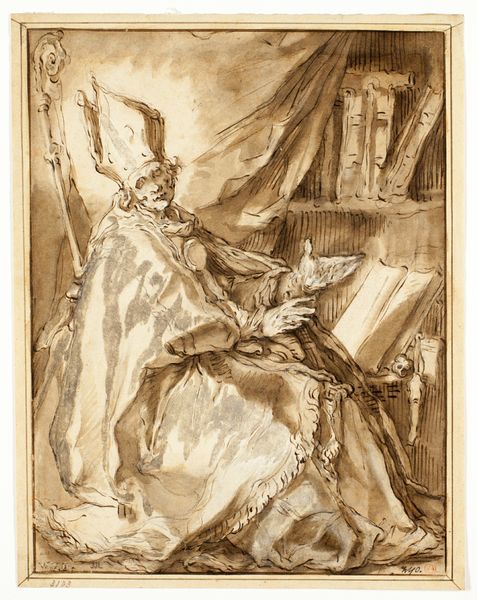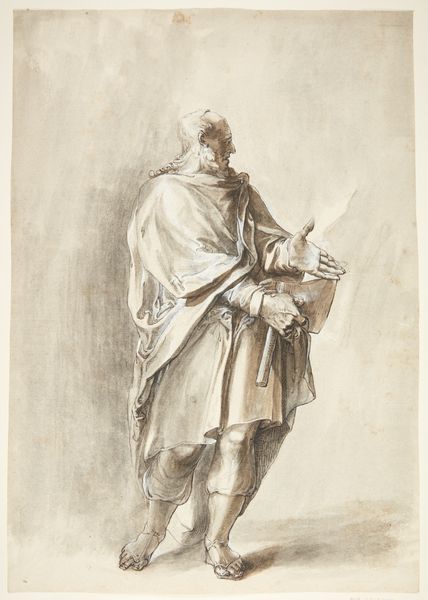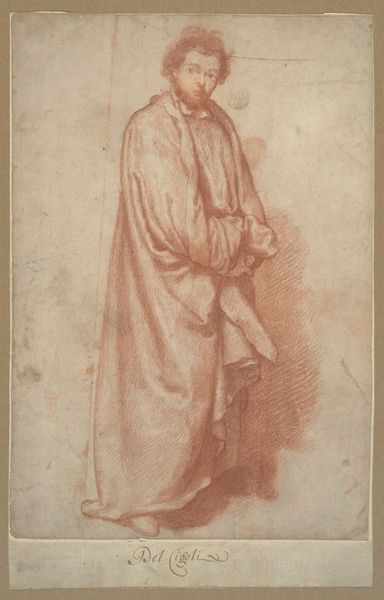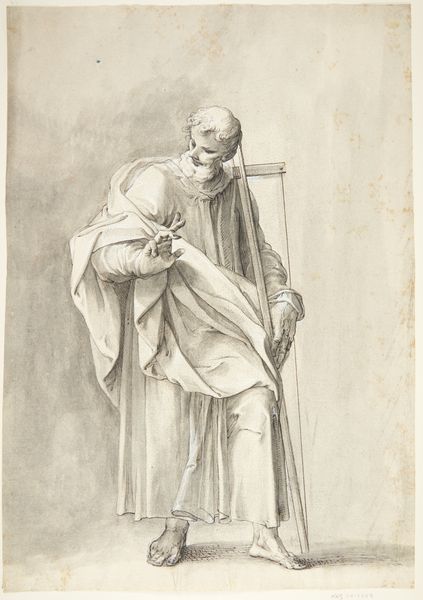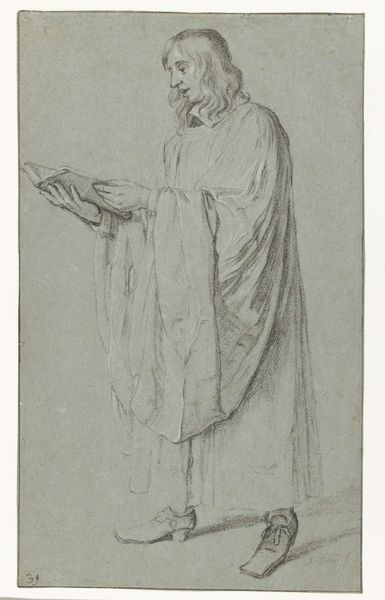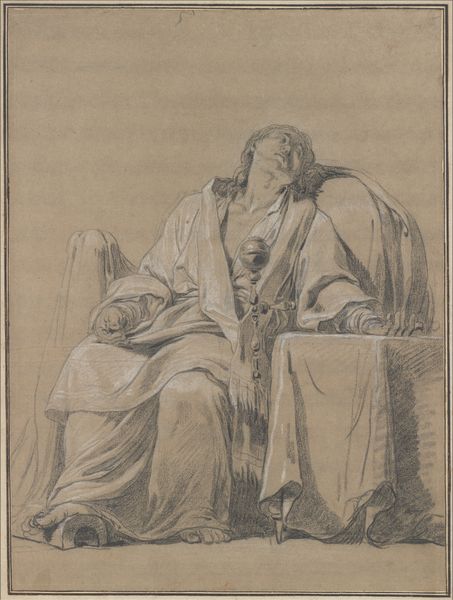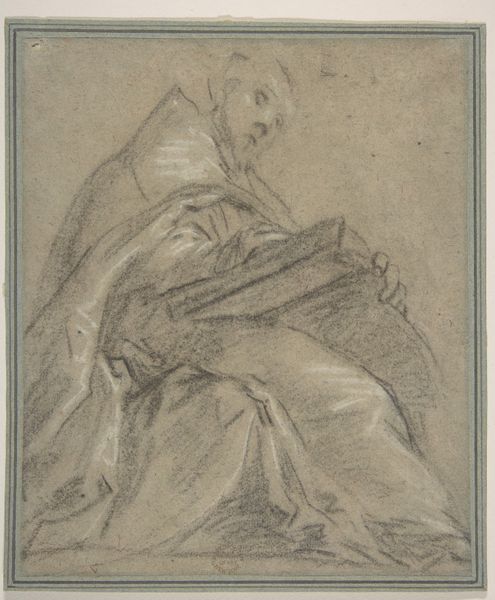
drawing, print, ink, pen, charcoal
#
drawing
#
baroque
# print
#
charcoal drawing
#
ink
#
pen
#
charcoal
#
history-painting
Dimensions: 461 × 365 mm
Copyright: Public Domain
Editor: Here we have Abraham Bloemaert’s “Bishop Kneeling in Prayer,” date unknown, a pen, ink and charcoal drawing. The stark contrasts between light and shadow create a very somber mood. What are your initial thoughts? Curator: It's interesting how Bloemaert uses the image of a kneeling bishop. Considering the period, this imagery served several potential purposes. The church held significant socio-political power, and depicting its representatives in prayer served to reinforce notions of piety and obedience, yet such display can also be seen as a reflection upon the changing religious landscape of the time and power struggles. Do you think this drawing was intended as a straightforward depiction of faith, or might there be a more complex message? Editor: That's fascinating! I hadn't considered the potential socio-political implications. Perhaps there’s some tension between religious devotion and worldly authority depicted? Curator: Precisely. And remember, artistic patronage often came from the Church or related institutions. Even seemingly devotional images were produced within specific power structures. It is not an either/or but the entanglement of both! Bloemaert's artistic skill further elevates this potentially propagandistic image. Notice how he uses light to dramatize the figure, emphasizing the folds of the bishop’s robes? That focus makes him almost a symbol. Editor: Yes, the way the light catches the fabric almost feels theatrical. Now I'm also thinking about how images of religious figures were displayed publicly during that time. Curator: Exactly. These images reinforced societal hierarchies and values, especially in the Baroque period. Reflecting upon them critically now helps reveal the values of the time. How does thinking about that shape your reading of the piece now? Editor: I guess, before, I was simply reacting to the solemnity of it, but now I’m questioning who it was made for, and what role it played beyond being just a devotional image. Thanks! Curator: It shows how understanding historical context allows for deeper readings. Now we know that such devotion also reflects power!
Comments
No comments
Be the first to comment and join the conversation on the ultimate creative platform.
